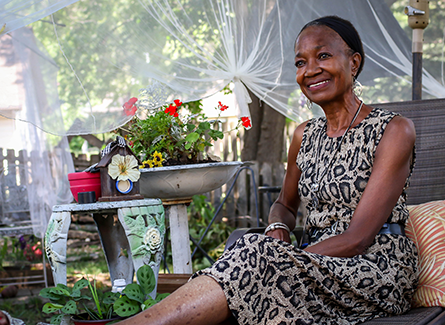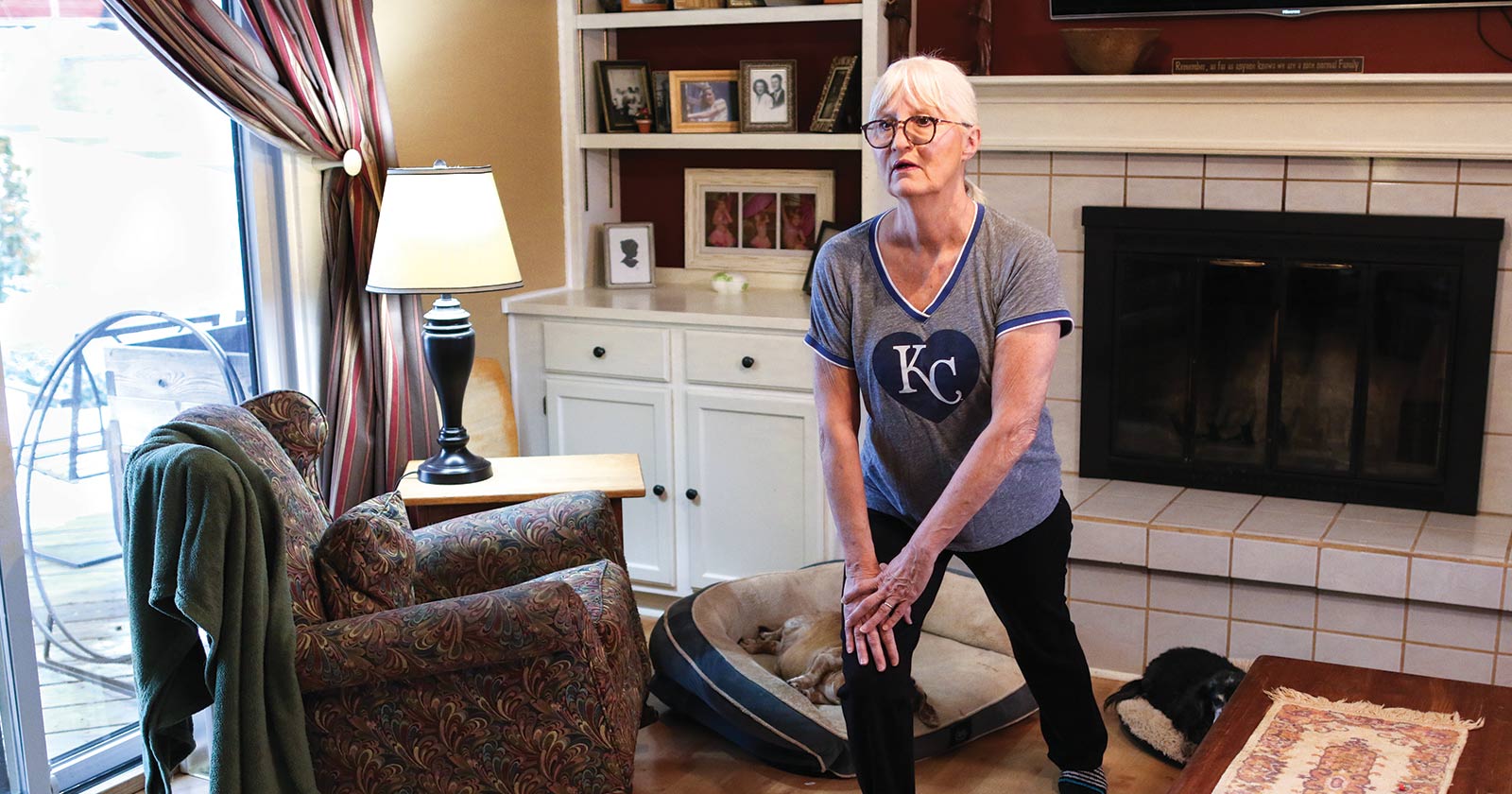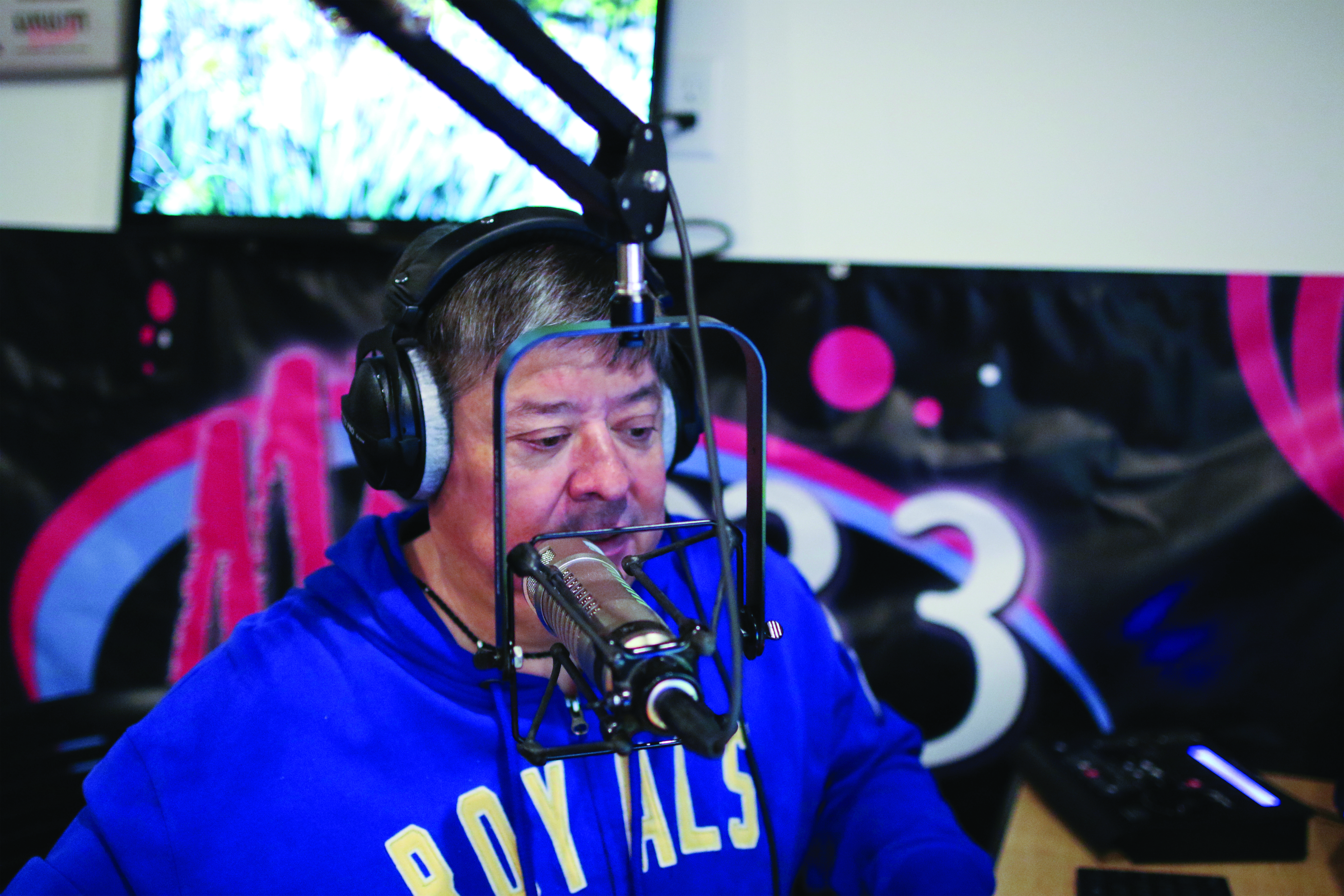In Her Own Words
"I can move, I'm happy and I know life is worth living."
Watch Sheryl talk about the steps she took to change her life.
If you ask Sheryl Phinney how her life has changed over the past few years, be prepared to settle in for a story of courage and inspiration. Her eyes sparkle and her face glows when she talks about having fun her energetic five-year-old granddaughter, the joy she gets from standing up to cook and the hard work she put into turning her health, and her life, around.
For many years, Sheryl’s weight and arthritic knees limited her mobility and caused her daily pain. A knee replacement a few years ago helped, but her increasing weight and a second bad knee forced her to rely on a walker, wheelchair or motorized scooter to get around. She always needed someone close by in case she fell. Diabetes, high blood pressure, high cholesterol and sleep apnea, all related to her weight and inability to exercise, put her life in even greater risk.
“I’ve struggled with my weight all my life,” Sheryl said. “When my husband passed six years year ago, I ate out of grief until I weighed nearly 400 pounds. Every doctor I saw said I wasn’t going to live.”
Her health also affected her job significantly. “I work in a field where I need to visit people in their homes because they don’t have reliable transportation to come to me,” Sheryl explained. “With my weight and bad knee, those visits were becoming difficult. I couldn’t climb steps easily. If I sat down on someone’s home, I had trouble getting back up. It was embarrassing.”
Her employer made accommodations, allowing Sheryl to limit her client base to people who were able to come to her office. She worked that way for five years.
Knowing she couldn’t keep going, she decided to take control. “Finally, I decided I wasn’t going to live this way,” she said. “I was not going to die at 58.”
Move No. 1
Unsure of how to get started, Sheryl called Robert F. Paul, DO, an orthopedic surgeon with Orthopedic Surgeons, Inc., who had replaced he left knee a few years earlier. “Dr. Paul was the only person I knew who could help me,” Sheryl recalled.
“Sheryl had gained weight from her first surgery and was probably in worse shape health-wise than when she had her first total knee,” Dr. Paul recalled. “The heavier you are, the faster your joints wear out. Excessive weight exacerbates arthritis and negatively impacts your heart and lungs.”
Knee replacement surgeryrequires a lot of stamina and exercise post-surgery. Before Dr. Paul would operate, he wanted Sheryl to lose some weight to improve her chances of having the most successful surgery experience possible. He recommended NKCH’s bariatric surgery program.
Sheryl attended an informational seminar, liked what she heard and complete the required paperwork. She learned her insurance would cover the surgery but only after she was in the program seven months and had lost some weight on her own.
“I was disappointed at first, but it turned out to be really good,” Sheryl said. “During those seven months, I met regularly with the dietitians, who helped me set simple, realistic goals I could achieve. The dietitians were a major part of my success. They were right there with me every step of the way.”
“Sheryl recognized early on that surgery is a tool to lose weight,” said Surgeon Keenan R. Berghoff, MD, the medical director of NKCH’s Bariatric Center and a general surgeon with Meritas Health Comprehensive Surgery. “She understood that she had to change. She realized this was permanent and that she had to participate.”
Nine months after weight loss surgery, Sheryl had lost more than 100 pounds. With her health headed in the right direction, she called Dr. Paul to see if he thought she was ready to have her other knee replace.
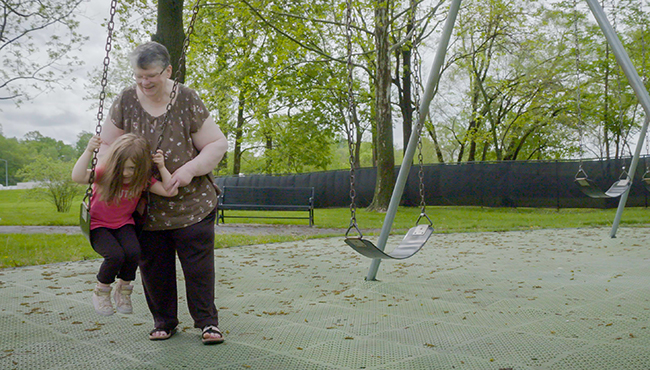
Move No. 2
Total joint replacement protocols at NKCH had changed since Sheryl’s first knee surgery. The hospital had started a pre-surgery program focused on making surgery safer for patients, resulting in better outcomes.
Before performing surgery, Dr. Paul wanted Sheryl to lose a little more weight. She met with the pre-hab program’s navigator, who looked at her medical history and assessed her overall health. She identified a few remaining risk factors and helped Sheryl take care of them.
Sheryl also enrolled in two pre-hab classes. The hospital’s six-week pre-surgery conditioning class, Get a Head Start, helped her strengthen her muscles and improve her flexibility so she’d be ready for the intensive physical therapy required after surgery.
She also attended NKCH’s free one-hour total joint replacement class. “The class explained what we could expect before, during and after surgery and the types of equipment we might need,” Sheryl said. “We learned about nerve blocks and what would be expected of us after surgery, like walking the day after surgery. I got to practice getting into and out of a car, which helped a lot. I felt like when I went home after surgery I was prepared.”
Hello, Life
In the two years since Sheryl decided to changer her life, she’s lost almost 164 pounds. Her body mass index dropped from 67.8 to 39.2. She passed her motorized scooter and walker to others. She said goodbye to diabetes, high blood pressure and high cholesterol, sleep apnea and a lifestyle limited by pain and immobility.
Now, she’s doing things she hasn’t be able to do on her own in years. “I can make my bed and take a shower without having someone nearby in case I fall,” Sheryl said. “I can do my own laundry and stand at the sink to do my dishes. I know most people don’t get excited about that stuff, but I do because I used to have to hire someone to do these things.”
The most fulfilling change has been in her relationship with her granddaughter. “I can actually play with my granddaughter instead of sitting and wondering what I’m going to do with her,” Sheryl added. “We finger paint, read books and go to the park. She’s a bundle of energy, and now I can keep up with her.”
At work, she gave up her special parking space because now she can walk longer distance. And, she’s back to visiting her clients in their homes after five years of immobility. “I go to people’s homes about four times a week now,” she said. “I can go up and down stairs, get up off a chair, whatever I need to do. It’s really been a dramatic change.”
Dr. Berghoff and Dr. Paul gave Sheryl the tools she needed to change her life. How she chose to use those tools was up to her. “Sheryl realized early on that if she didn’t adhere to the weight loss program after surgery she wouldn’t be successful,” Dr. Berghoff said. “Now, life is no longer passing her by. She’s going right along with it.”
“Sheryl used almost every service NKCH provided, and she did everything that was asked of her,” Dr. Paul agreed. “It was difficult, and it was time consuming, but she kept going and did what she needed to do.”
“I feel free,” Sheryl said. “I’m not going back. I’m going to keep this up because I can move, I’m happy, and I know life is worth living.”
Related Articles

March 9, 2020
3 Sneaky IBS Triggers
For people with irritable bowel syndrome, spring may spark a flare-up in symptoms

May 31, 2024
5 Nutrition Tips for a Healthier Lifestyle
Healthy eating and proper nutrition play a big part in maintaining good health. Here's how to improve your nutrition habits.
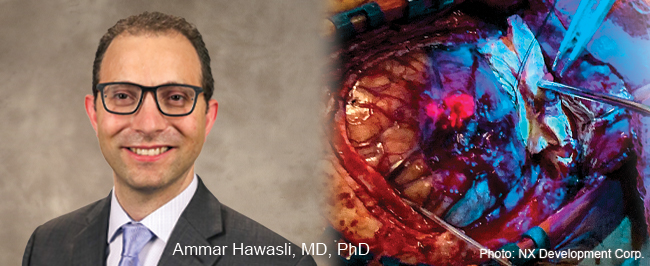
July 8, 2021
5-ALA Fluorescence Guides Neurosurgeons for More Complete Resections
Neurosurgeons Ammar Hawasli, MD, PhD, and Stephen Reintjes Jr., MD, with Meritas Health Neurosurgery, are now using a progressive treatment that allows for the more precise removal of malignant gliomas and glioblastomas.
